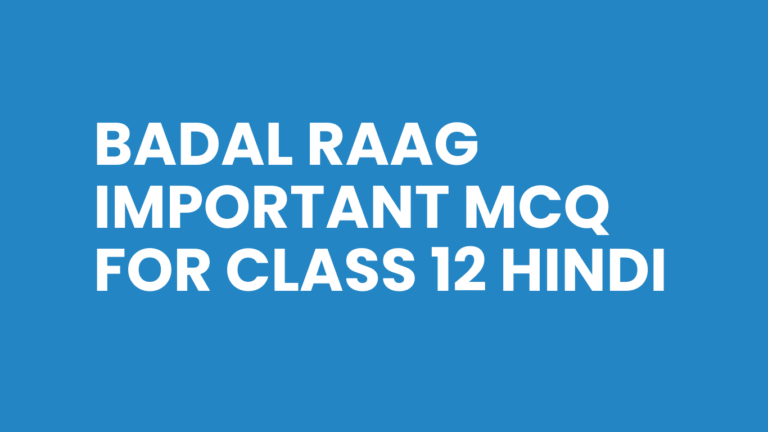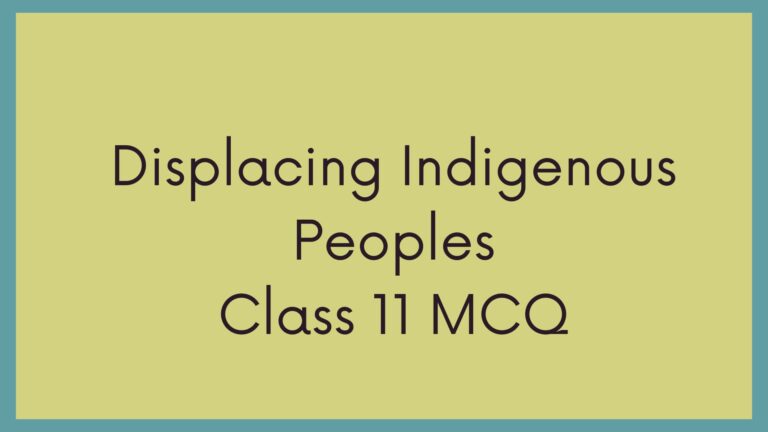Class 12 Geography Chapter 3 Question Answer | Human Development Important questions
In this article, you will get the Class 12 Geography Chapter 3 Question Answer. this can help you to excel in your exams. these questions are crafted by me on the basis of my experience of class 12 boards in 2025, where I scored 98 marks out of 100. Use this to improve your studies.
Class 12 – Fundamentals of Human Geography, Chapter 3: Human Development.

Chapter 3 – Human Development
Human development is a holistic concept that focuses on improving people’s quality of life rather than just economic growth. It emphasizes enlarging choices, opportunities, and freedoms for individuals.
The chapter explains approaches, indices, and pillars that shape the idea of balanced and sustainable human progress.
Human Development 3 Marker Questions
Q1. Who introduced the concept of Human Development and why?
Answer: Mahbub-ul-Haq introduced the concept in 1990. He believed that mere economic growth is insufficient to measure progress. Human development must be assessed in terms of enlarging people’s choices, ensuring equity, sustainability, productivity, and empowerment.
Q2. Distinguish between growth and development.
Answer:
- Growth is quantitative (increase in income, production) and value-neutral. It may be positive or negative.
- Development is qualitative, always positive, and focused on human welfare. It includes better education, healthcare, and living standards.
Q3. What are the three basic dimensions of Human Development Index (HDI)?
Answer:
- Health – measured by life expectancy at birth.
- Education – measured by literacy rate and mean years of schooling.
- Resources/Income – measured by Gross National Income (GNI) per capita in purchasing power parity (PPP).
Q4. What is the difference between income approach and capability approach?
Answer:
- Income approach: Human development measured only through per capita income or GDP.
- Capability approach (Amartya Sen): Focuses on freedom, opportunities, and choices available to people in education, health, and resources.
Q5. Explain the concept of Human Poverty Index (HPI).
Answer: The HPI measures the shortfall in human development. It considers:
- Probability of not surviving till age 40.
- Illiteracy rate.
- Lack of access to safe water, health, and nutrition.
It highlights deprivations rather than achievements.
Q6. Why does Kerala have higher HDI than Punjab despite lower per capita income?
Answer: Kerala has invested more in healthcare, education, and social development. Higher literacy rates, better healthcare facilities, and gender empowerment give it a higher HDI, while Punjab spends more on income and agriculture.
Q7. Mention the four pillars of Human Development.
Answer:
- Equity – equal opportunities for all.
- Sustainability – protection of resources for future generations.
- Productivity – efficient use of human resources.
- Empowerment – giving people the power to make decisions.
Q8. What are the limitations of HDI?
Answer:
- Ignores inequality within countries.
- Focuses only on average achievements.
- Does not consider political freedom, human rights, or environmental issues.
Thus, it gives only a partial picture of development.
Q9. Name two countries with very high HDI and two with low HDI.
Answer:
- Very High HDI: Switzerland, Norway.
- Low HDI: Niger, Chad.
Q10. Why is development considered more important than growth?
Answer: Growth only reflects income increase, but development includes quality of life – better education, healthcare, gender equality, freedom, and human rights. Without development, growth is meaningless.
Human Development 5 Marker Questions
Q1. Explain the various approaches to measuring human development.
Answer:
- Income approach: Focuses on per capita income. Criticized for being narrow.
- Welfare approach: Uses indicators like health, education, sanitation.
- Basic needs approach (ILO): Considers minimum needs – food, shelter, clothing, sanitation, education.
- Capability approach (Amartya Sen): Focuses on people’s choices and opportunities.
👉 The Capability approach + HDI (Mahbub-ul-Haq, UNDP) is most accepted today.
Q2. Explain the four pillars of human development with examples.
Answer:
- Equity: Everyone should have equal opportunities (e.g., education for all, gender equality).
- Sustainability: Use resources carefully to protect future needs (e.g., renewable energy use).
- Productivity: Human resource development increases efficiency (e.g., skilled workforce in Japan).
- Empowerment: Participation in decision-making ensures dignity and freedom (e.g., Panchayati Raj in India).
These pillars ensure balanced development.
Q3. Why is Sri Lanka ranked higher than India in HDI despite lower income?
Answer: Sri Lanka invests heavily in health and education. It has high literacy, long life expectancy, and better gender equality. India has higher income but struggles with inequality, poverty, and low human resource investment. This shows that income alone cannot ensure development.
Q4. What are the limitations of using HDI as a measure of development? Suggest alternatives.
Answer:
- HDI ignores inequality, environmental concerns, political freedom, and cultural factors.
- It gives only average achievements and hides regional disparities.
- Alternatives: Human Poverty Index (HPI), Gender Inequality Index (GII), Multidimensional Poverty Index (MPI), and Bhutan’s Gross National Happiness (GNH).
Q5. Compare the features of countries with high HDI and those with low HDI.
Answer:
- High HDI countries (e.g., Norway, Switzerland): High literacy, high life expectancy, gender equality, strong health and education systems, skilled workforce.
- Low HDI countries (e.g., Niger, Chad): Low literacy, poor healthcare, high infant mortality, political instability, poverty, resource misuse.
👉 Thus, investment in people’s capabilities determines development, not just income.






4 Comments